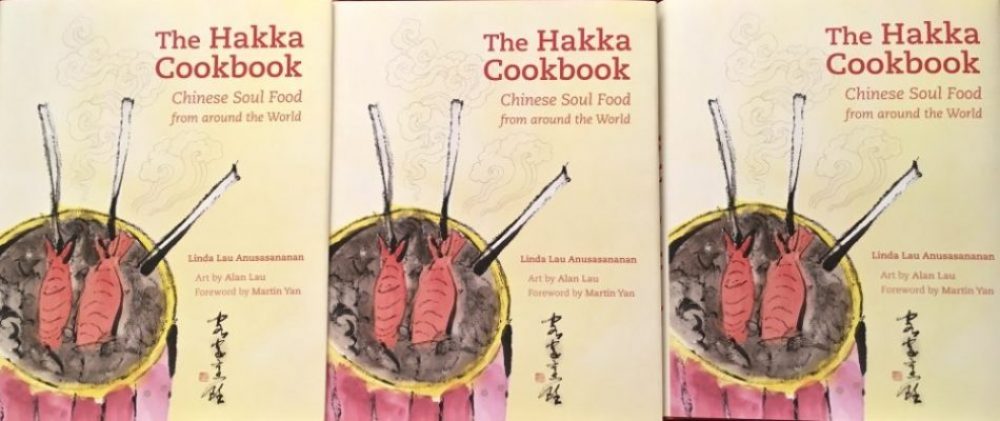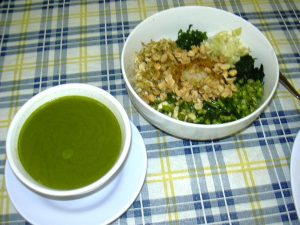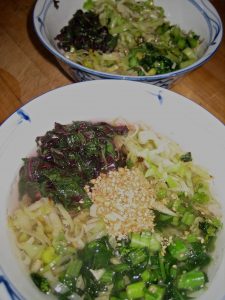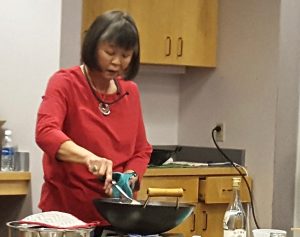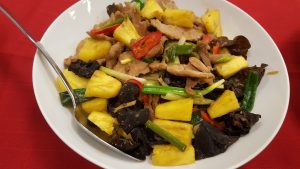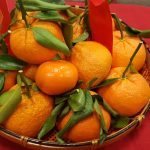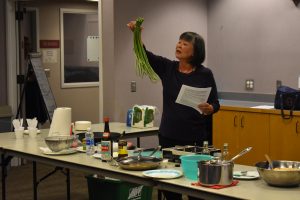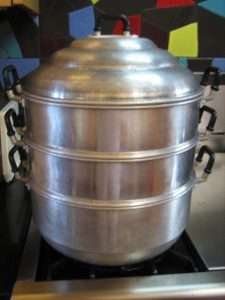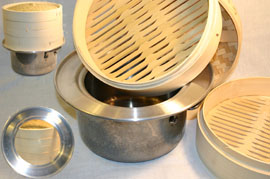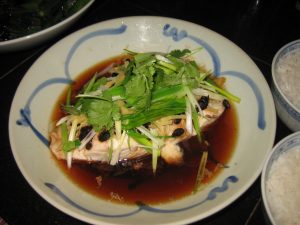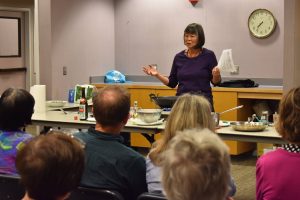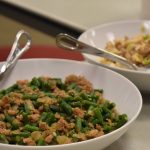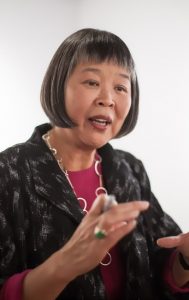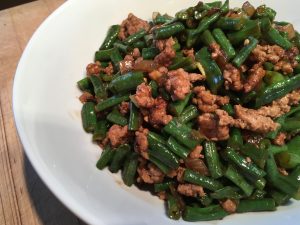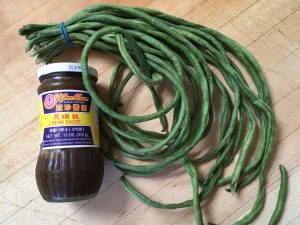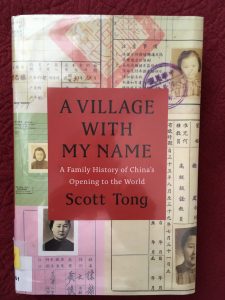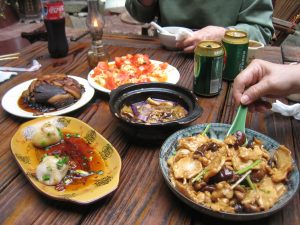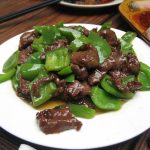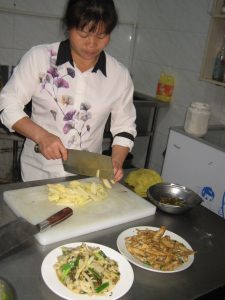Today is the 7th day of the Lunar New Year. According to ChineseAmericanFamily.com The seventh day commemorates Nu Wa, the ancient goddess who is believed to have created mankind from yellow clay. On this day, Chinese people eat healthy foods with auspicious meanings. For the Hakka, that dish might be lui cha (aka lei cha, thunder tea). Several variations exist from savory to sweet.
This dish claims to cure almost any health issue. This cure-all reputation originated almost 2000 years ago when in a crucial battle, a general ordered a Hakka doctor to treat his plaque-stricken troops. The doctor prescribed a tea made from pounded seeds, nuts, and tea leaves. When the sick troops drank the tea they miraculously recovered.
In The Hakka Cookbook, you’ll find recipes for the Savory Pounded Tea Rice from Malaysia on page 119 and Pounded Tea with Sweets from Taiwan on page 99. Loh Sye Moi from Malaysia serves a simpler related soup-like dish she calls Vegetable Tea (page 113). Although it does not include tea leaves, it includes many vegetables and toasted seeds and nuts.
Many of the ingredients in these dishes have auspicious meanings. Green vegetables symbolize close family ties. Peanuts promote health, long life, prosperity, continuous growth, wealth and good fortune, stability. Seeds symbolize fertility. Walnuts promise happiness for the whole family.
On this day consider celebrating humans by eating foods that promote your good health. May the Year of the Pig bring you good health, prosperity, and abundance!
